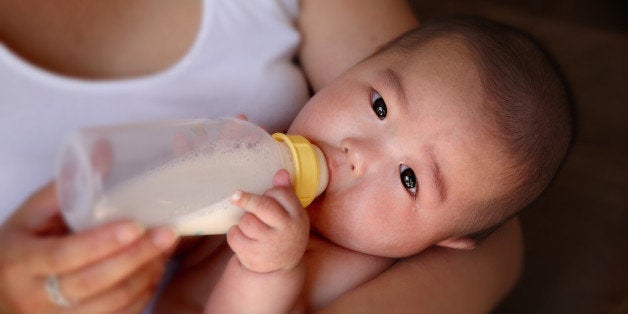
By Megan Thielking
The same hormone that controls orgasms also controls the production of breast milk. That's just one of the surprising scientific facts about breast milk highlighted in a new review -- dubbed "Breastfed at Tiffany's" -- published Tuesday in the journal Trends in Biochemical Sciences. Here are our favorites:
1. It's chock full of sugar
Breast milk is really quite sweet, in terms of its chemical makeup. Human breast milk has about 200 different sugar molecules, which serve a wide range of purposes. When a baby is first born, the sugars in breast milk provide sustenance for the growing bacterial population in their body. Milk oligosaccharides -- a type of complex sugar -- are thought to promote the growth of good gut bacteria.
2. It helps fight infections
The sugars in breast milk also help prevent newborns from getting infections, said Thierry Hennet of the University of Zurich, who authored the new paper. Those sugars let intestinal pathogens like norovirus latch onto them. That stops those pathogens from latching on to the mucosal layer in the intestine and causing serious problems.
3. It's nothing like milk from other animals
Human breast milk isn't really comparable to milk produced by other mammals. While human breast milk has about 200 sugar molecules, cow milk has only around 50.
"Humans may have the most complex breast milk of all mammals," Hennet said. Research shows that proteins only account for about 10 percent of the calories in human milk, compared to half of the calories in cow's milk. And cow's milk has about four times the amount of calcium as human milk does. It's not clear why the nutritional composition varies so much from one species to the next, though -- that's something scientists have been trying to figure out for quite some time.
4. Women are impressive milk producers
The amount of energy that lactation requires from a woman is almost the same as the daily caloric demand of the brain. But human mothers are remarkably efficient at it: It's estimated that their conversion of dietary calories to breast milk calories is almost 80 percent.
5. Milk production is controlled by the same hormone that controls orgasms
The hormone oxytocin causes the muscles in milk ducts to contract, and then produce milk. It's the same hormone that's released during labor and childbirth; it also plays a part in sexual reproduction and controls the muscle movements in orgasms. Anecdotally, some women report that the hormonal up-and-down that comes with breast milk production can make them feel sleepy, while others might experience nausea or weakness.
6. The makeup of breast milk changes over time
Right after birth, breast milk is full of antibodies and molecules that are designed to slow the growth of harmful bacteria in a baby's burgeoning immune system, Hennet said. After a month or so of being exposed to the outside world, babies begin to develop their own immune systems. Around the same time, breast milk changes, as well. Hennet said the level of antibodies produced in a mother's milk can drop by more than 90 percent after a month of nursing, while the amount of fat and other nutrients in breast milk increases to provide babies the nourishment they need.